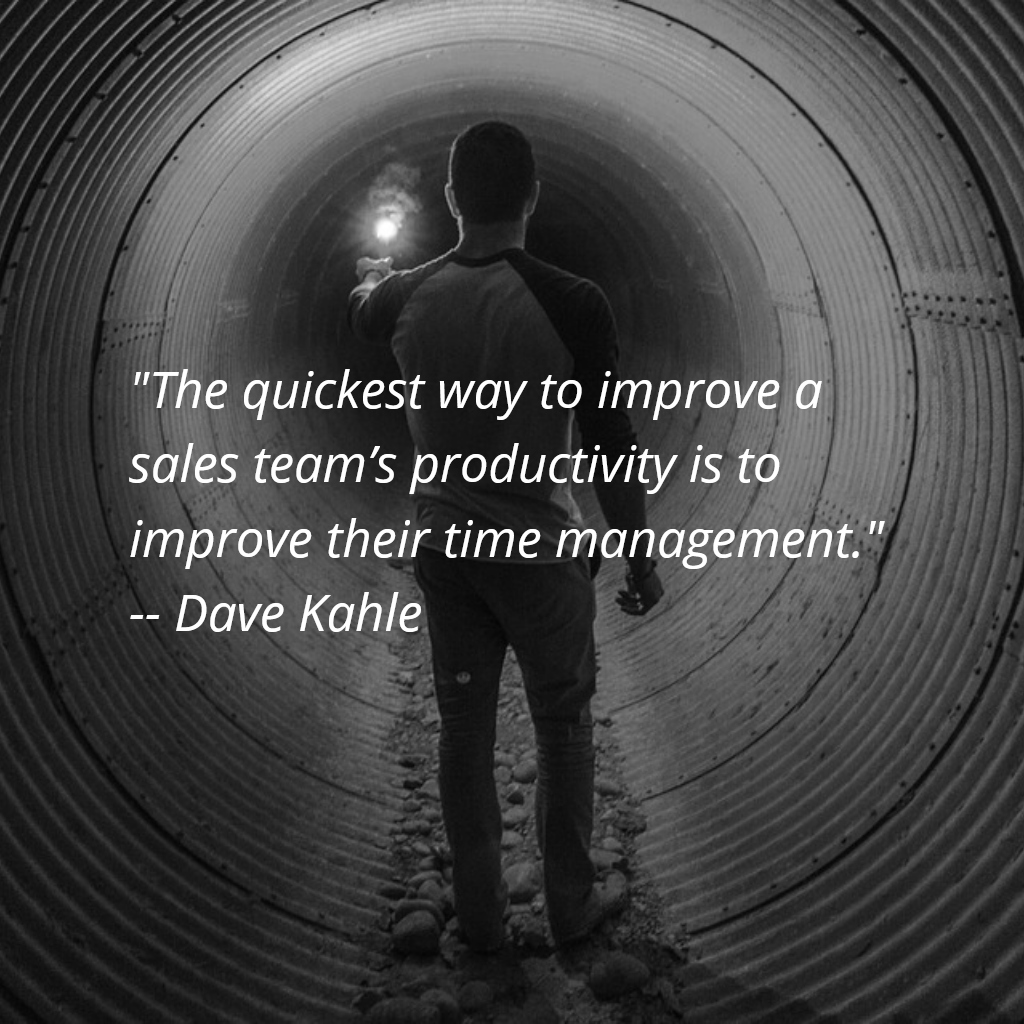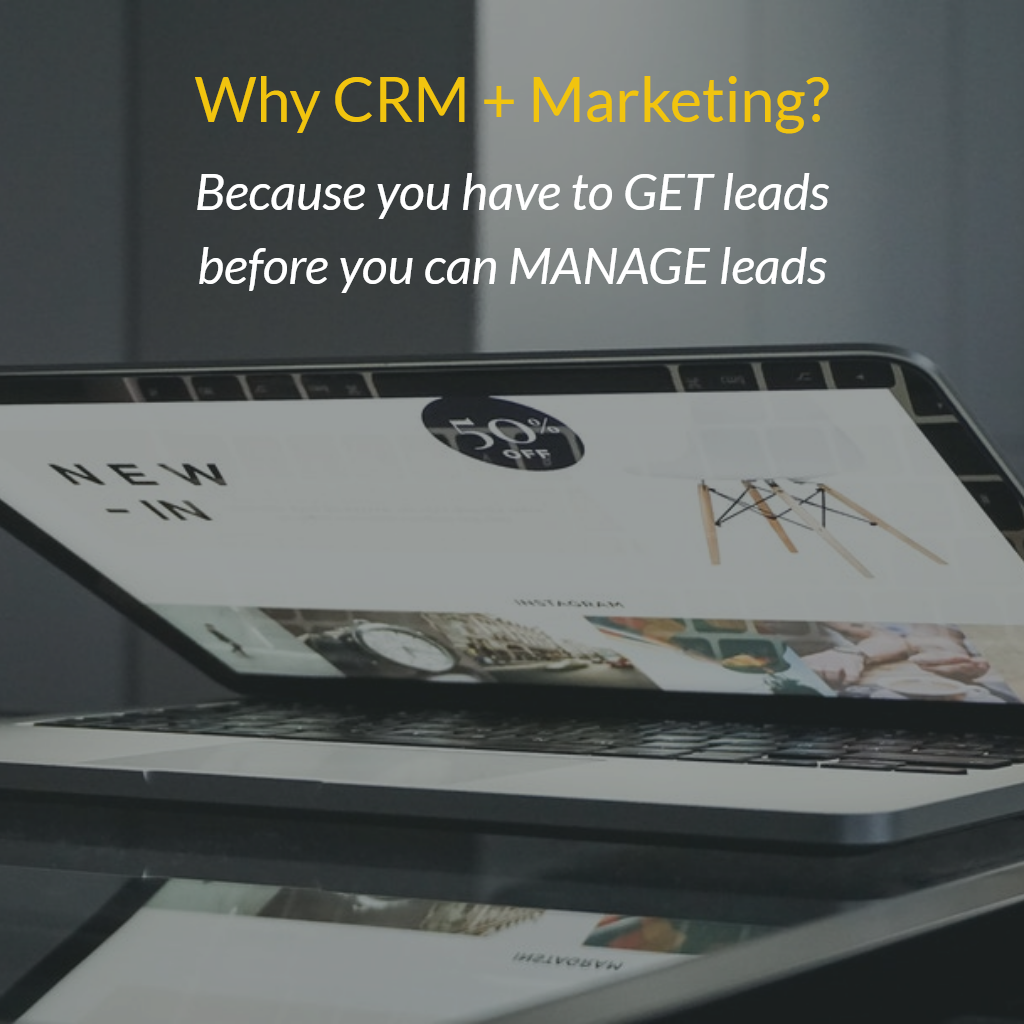
By Dave Kahle
Recently, one of the sales people with whom I was working volunteered that he often obtained demonstration samples by coming into the office, visiting the warehouse, opening a box of the product he wanted to sell, taking one out, and re-closing the box. When it comes to good time management for sales people practices, this was at the bottom of the list.
As you can imagine, this gave the warehouse manager fits. However, there were more consequences to this practice than a furious warehouse manager. This is an example of sales system GUNK!
What’s gunk?
Any practice that detracts from the sales person spending time with customers. In other words, other things the outside sales people do instead of meeting with customers.
When we boil down the job of the typical outside sales person to its essence, it is clear that the one thing we want of them, the one place that they bring value to the organization, the one thing they do that is the essential reason we have them, is interact with the customers. Everything else is a means to that end.
Most drainage pipes, over time, accumulate layers of gunk that clog up the system. So, too, most sales systems, over time, accumulate layers of habit and practice that erode the time the sales person spends in front of the customer.
Here are some examples of sales system gunk.
In the example above…
not only did the sales person detract from the purity of the inventory, cause needless stress for the warehouse manager, and potentially short ship a customer, he also spent time doing something that took him out of his territory.
In a gunk-less sales system, the sales person would call or e-mail the person who was responsible for maintaining samples, and ask for the appropriate sample to be sent. It should have taken two minutes to send an e-mail instead of an hour driving back and forth to the office.
Sales literature.
In a gunked-up system, the sales people drive into the office regularly and collect the literature they need from a variety of sources.
In a gunkless system, they maintain literature inventories in their cars or home offices, and regularly replace their inventory by e-mailed or faxed requests.
Emergency shipments.
I was recently scheduled to interview a number of sales people for one of my clients. We had sessions scheduled every hour. One of the sales people didn’t make the appointment. The reason? He had to drive home, change cars with his wife, use the larger car to drive to the warehouse, pick up an emergency shipment, and deliver it to a customer.
While on one hand we can applaud the sales person for taking care of the customer, on the other hand, we need to recognize that this practice is extremely costly gunk.
This whole episode probably took the better part of a half-day of the sales person’s time. Not only was that an extremely expensive delivery, but the episode detracted from the sales person’s time and focus.
That’s several sales calls that were not made because the sales person was acting as the company’s highest paid delivery driver. The company could have hired a limousine service to deliver the product in a stretch Lincoln for less.
In a gunkless sales system, an inside person expedites backorders and arranges for emergency shipments so that the sales people are free to concentrate on interacting with the customer.
Office time.
This is one of the largest contributors of sales system gunk, depositing large clumps of smelly sticky stuff whenever it occurs.
In a gunked-up system, sales people come into the office regularly. Maybe they start every day there. That time in the office is generally their least productive time. There is coffee to be drunk, phone calls to take, mail boxes to empty, colleagues to talk with – all gunky practices that take up expensive selling time.
This is such a large issue, that I have even developed a law, similar in scope and dependability to Einstein’s law of relativity. I call it Kahle’s Law of Office Time. It states that, “Whenever a sales person has 30 minutes of work to do at the office, it will always take two hours to do it.”
In a gunk-free system, sales people are not allowed in the office before 4:30 PM on Fridays.
The list of examples of gunk can go on and on. But you have the idea. Gunk is any habit or practice within your sales organization that detracts from the sales person spending time in front of the customers.
From my experience, gunk is inevitable, and often hardly visible. Gunk habits develop with time and become part of the unwritten rules about how things are done in your organization. Yet, they suck valuable time and energy out of your sales system.
One sure way to improve the productivity of your sales system is to clean out the gunk, freeing the sales people to spend their time and energy on the essence of their job and the activity that will bring you revenue – being in front of the customers.
Here are five steps to de-gunk your system.
- Identify the gunk. Have someone interview the sales people, asking them to recall a blow-by-blow description of how they spent their day or week. Look for gunk. Sometimes, gunk is so deeply ingrained in the sales force’s habits and routines that they don’t even recognize it. So, it may work better to have someone spend a day with each sales person, making notes about all the gunk. Make a list of all of the things that the sales people do that could be done better or cheaper by someone else.
- Work with a team of inside people and sales people to develop alternate ways of handling each of those activities.
- Create policies and written procedures. Job descriptions may have to change.
- Roll out the new procedures in a sales meeting. Start with the big picture. Explain why you’re making these changes, and how it will help them and the company to be more productive. Talk through some scenarios, answer their questions, and then chisel the new program in granite.
- Appoint someone to watch over the implementation of the changes. Remember, we’re talking about habits here, and habits are hard to change. Someone needs to monitor the new program, reminding everyone involved of the new way to do things.
Once you’ve augered out the drainage pipes in your home, you can probably rest easy for a year or so. So too with sales system gunk. Once you’ve gone through this process and cleaned it up, you won’t need to revisit the issue for a while.
Rest easy, you’ve just made your sales system more productive.
******************************************************************
Copyright MMV
Originally published on davekahle.com
About the Author:
Dave Kahle is one of the world’s leading sales authorities. He’s written ten books, presented in 47 states and ten countries, and has helped enrich tens of thousands of sales people and transform hundreds of sales organizations. Check out our Sales Resource Center for 455 sales training programs for every salesperson at every level. To connect to the Sales Resource Center use this link:
http://www.thesalesresourcecenter.com
source http://www.commence.com/blog/2017/12/27/is-your-sales-system-clogged-with-accumulated-gunk/






